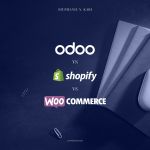Everyone’s got a Gen Z opinion, but most of them are vibes and not actionable. GWI throws around stats about what Gen Z values: authenticity, individuality, anxiety, fluid identities, and whatever new platform they’re migrating to this quarter. But what does that actually mean when you’re designing interfaces, content flows, and products for this generation? Let’s get into it.
1. Gen Z hates being sold to — so design like a guide, not a pitch deck
Pushy CTA buttons, popups, and fake urgency are dead with this crowd. Instead:
- Use onboarding flows that ask more than they tell
- Design UIs that give users the power to explore rather than shove offers down their throat
- Swap product-touting headlines for emotionally intelligent microcopy
2. Visual identity matters more than ever
They’re fluent in design and hyper-aware of visual language. Your brand’s visuals are the first filter. Consider:
- Using bold color-blocking and motion, but only if it feels intentional
- Mixing static layouts with scroll-triggered movement or interaction
- Icons should feel bespoke, not stock. Typography should have personality but still be legible
3. Think like a group chat
The best Gen Z-facing products feel like a conversation with someone who gets them. That means:
- Text that sounds like a human being
- Clear opt-outs and respect for privacy
- Community-first design patterns: reactions, saves, quiet spaces
4. They live in alt accounts, not personas
This generation is fluid. They move across platforms and personas. Your design needs to:
- Make it easy to compartmentalize experiences (e.g., custom dashboards, quick profile switching)
- Recognize identity without boxing users into rigid categories
5. Load fast, think local
They are mobile-native, internet-native, and impatient. Slow-loading, non-optimized designs break trust. Also:
- Don’t assume they’re always on blazing internet
- Think about localization and regional nuance in the product experience
Gen Z isn’t mysterious. They’re just not here for corporate speak. If your design doesn’t respect their attention, their context, and their intelligence, they’ll bounce. No second chances.
Read more:



















